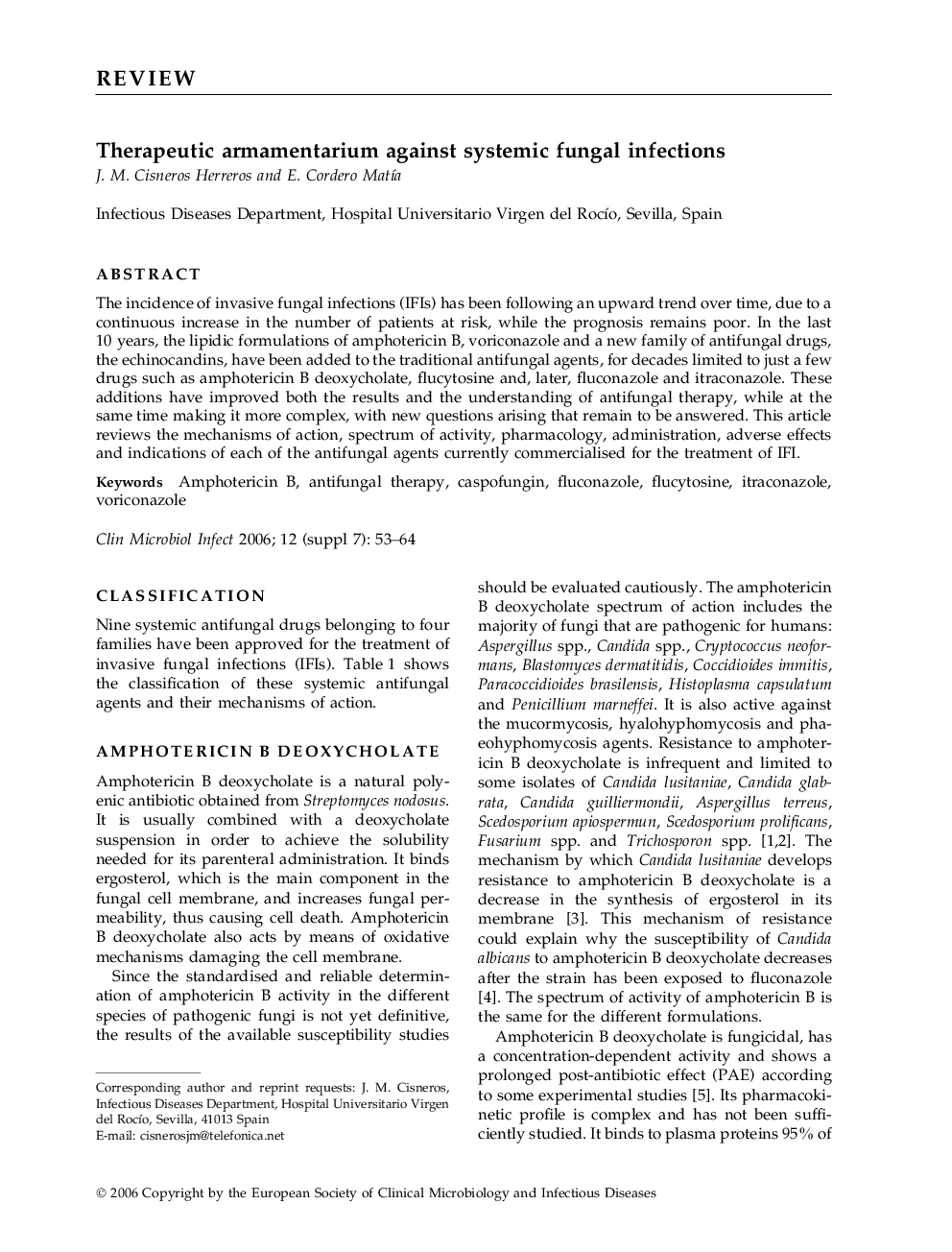| Article ID | Journal | Published Year | Pages | File Type |
|---|---|---|---|---|
| 3398470 | Clinical Microbiology and Infection | 2006 | 12 Pages |
ABSTRACTThe incidence of invasive fungal infections (IFIs) has been following an upward trend over time, due to a continuous increase in the number of patients at risk, while the prognosis remains poor. In the last 10 years, the lipidic formulations of amphotericin B, voriconazole and a new family of antifungal drugs, the echinocandins, have been added to the traditional antifungal agents, for decades limited to just a few drugs such as amphotericin B deoxycholate, flucytosine and, later, fluconazole and itraconazole. These additions have improved both the results and the understanding of antifungal therapy, while at the same time making it more complex, with new questions arising that remain to be answered. This article reviews the mechanisms of action, spectrum of activity, pharmacology, administration, adverse effects and indications of each of the antifungal agents currently commercialised for the treatment of IFI.
